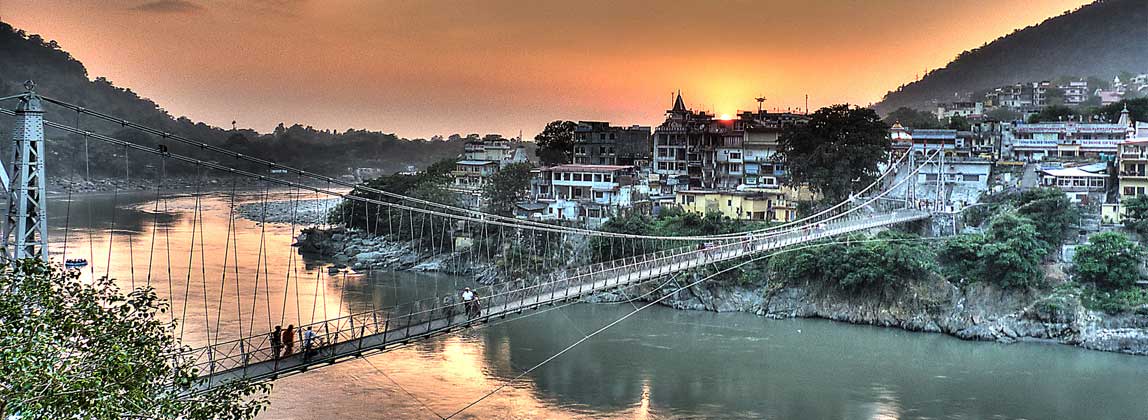


RISHIKESH - is a name of Vishnu that means 'lord of the senses'. The root words Rishik and ish join together to make Rishikesh. Hrishik means Senses and ish means master or Lord. Hence the word means Lord of Senses or Lord Vishnu.
It is a holy city for Hindus and a famous centre of pilgrimage. It is also known as the gateway to the Himalayas and is the starting point for traveling to the sites that form the Char Dham pilgrimage — Badrinath, Kedarnath, Gangotri, and Yamunotri. The sacred river Ganga flows through Rishikesh. In fact, it is here that the river leaves the Shivalik mountains, and flows out into the plains of northern India.
Several temples, ancient as well as new, can be found along the banks of the Ganges in Rishikesh. It is sometimes nicknamed "the world-capital of Yoga", as it has numerous yoga centres. It is believed that meditation in Rishikesh brings one closer to attainment of moksha.
The ashrams strewn all over the town which are indisputably the leading tourist attractions in Rishikesh. On your tour to Rishikesh, you will come across lots of them. Most of them impart spiritual studies and lessons on meditation and well-being of the mind. Some of the leading ones are Parmarth Niketan, Sivanand Ashram, Yoga Niketan, Omkaranand Ashram, Vanprastha Ashram, Shankaracharya Nagar Transcendental Meditation Centre, Vithal Ashram and Yoga Study Centre
It is an engrossing temple established by Adiguru Shankaracharya near in the 8th century AD. It is in the center of the old town on the Banks of the River Ganges. According to the ancient records, it is one of the oldest temples of Rishikesh and is among the most important places to visit in Rishikesh. In the inner sanctum, you will find an idol of lord Vishnu. Several old statues, coins, pots and other artifacts of historical importance have been found during recent excavations within the premises.
This is the oldest temple complex in the entire area and you can find the description of well-known Indian epic Ramayana and Mahabharata on its walls. Only peace and harmony seem to dwell at this place and it is must visit among the tourist attractions in Rishikesh.
It is one of the most prominent landmarks at Rishikesh. This is a suspended bridge and was built in the year 1939. According to the beliefs, the river at this place is said to have been crossed by Rama's brother Lakshman using a jute rope. To savor the panoramic views of the surroundings and the cool breeze, this bridge is an ideal spot. The bridge attracts many tourists not only because of its legendary story, but due the number of temples and ashrams scattered around the bridge.
It is located adjacent to Triveni Ghat and is one of the most significant among the tourist attractions in Rishikesh. According to the legend, Goddess Yamuna saturated this pond and it mirrors the temple of Raghunath, which is devoted to lord Rama and his wife
Triveni Ghat, a confluence of three holy important Rivers the Ganges, the Yamuna and the Saraswathy, is a most revered sacred bathing spot in Rishikesh and is situated on the banks of Ganges River. It is of belief that those who take a dip in Triveni Ghat will have salvation, a relief from all sins carried out; the water here has the power to purify them. An impressive view of lamps floated in the river as part of aarti ceremony is pleasing to eyes after the sunset.
The main sporting activity in Rishikesh is White Water Rafting. It has grown to a popular and adventurous spot for white water rafting enthusiasts as the place offers a spectacular experience of medium to very tough and rough rapids in the regions of River Ganges. Many adventurous tourists both from India and abroad visit this place to experience the real challenges of white water rafting. September-November and March-May are ideal for rafting.